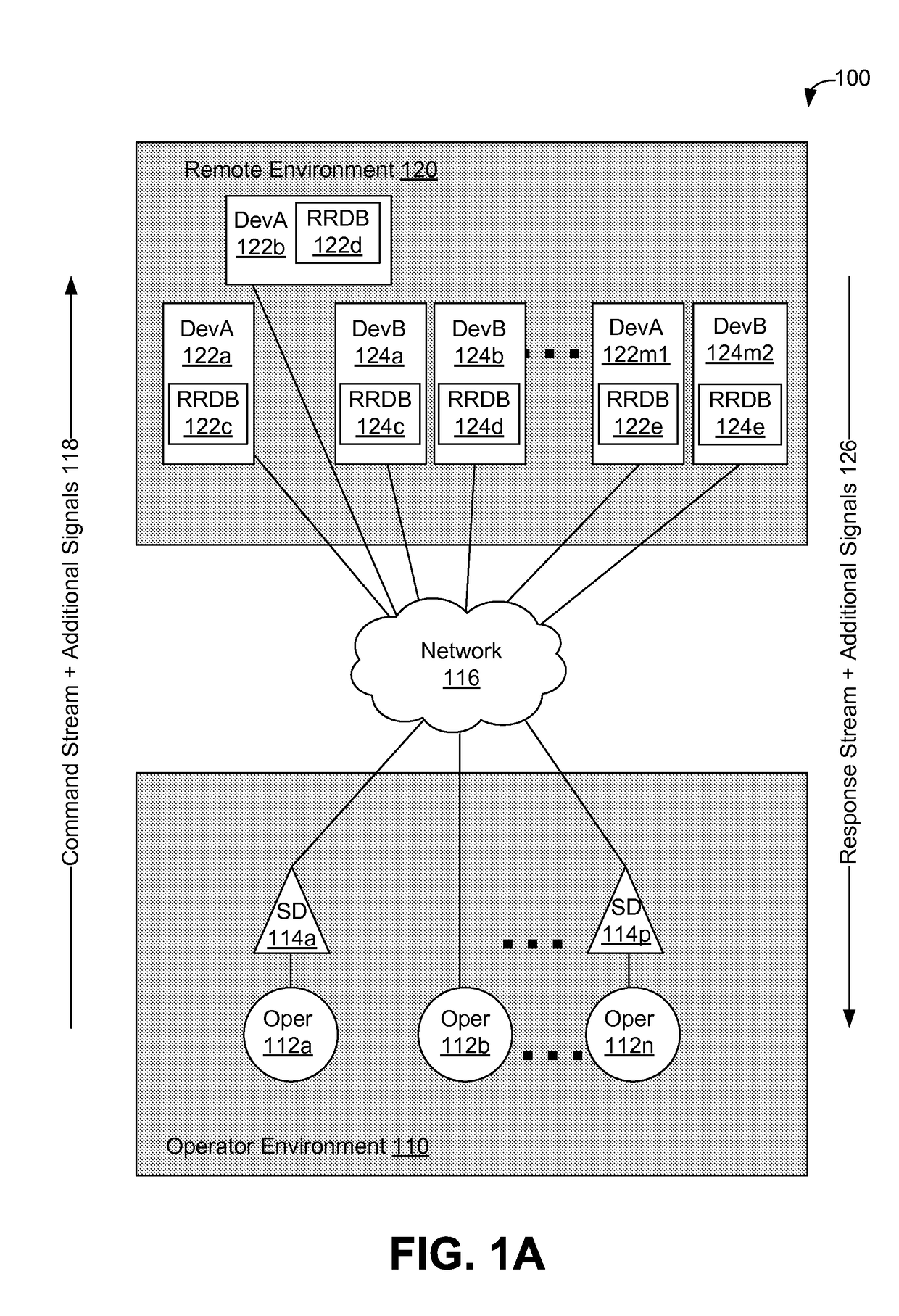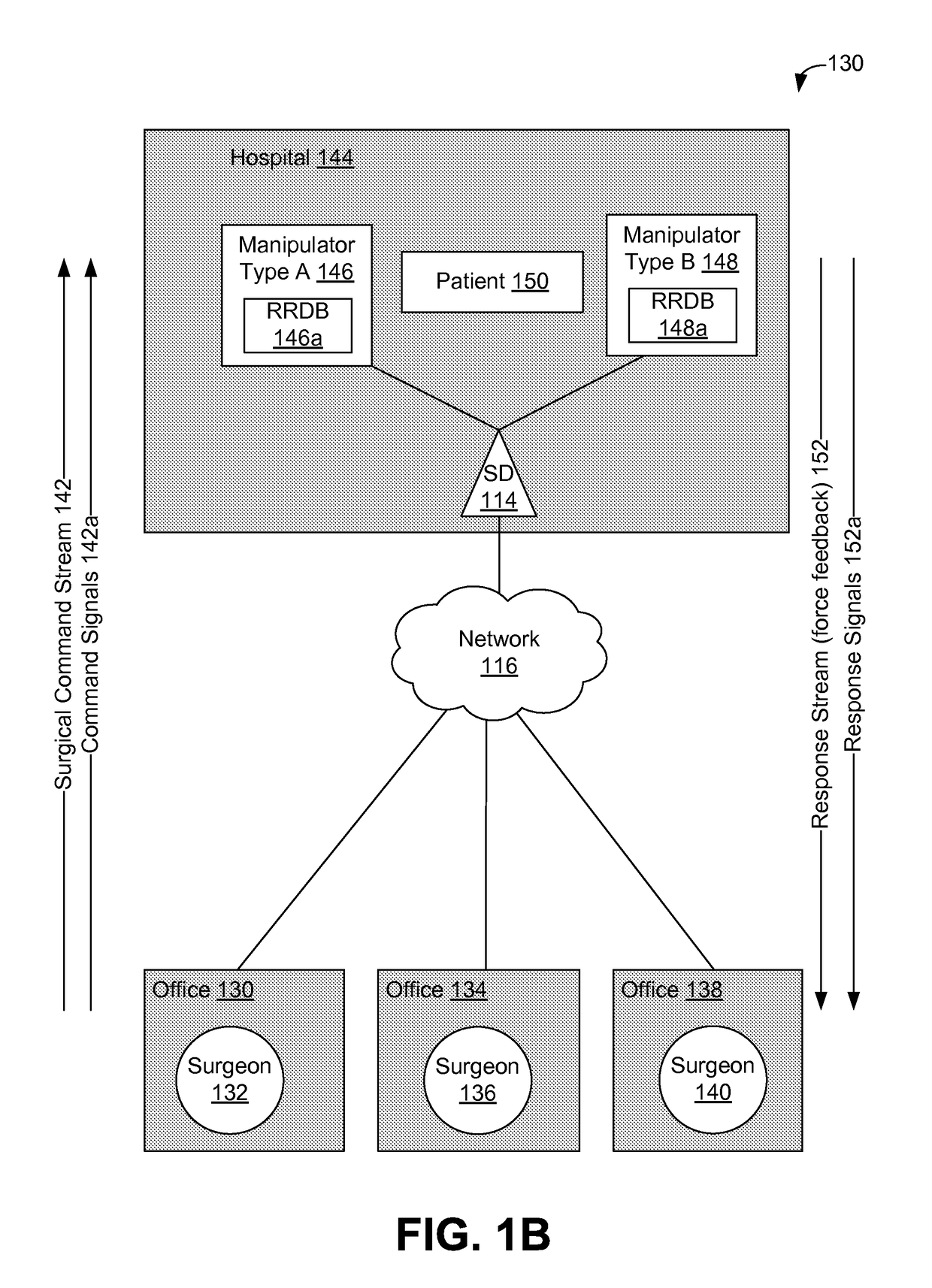Using supplemental encrypted signals to mitigate man-in-the-middle attacks on teleoperated systems
a technology of teleoperation and encrypted signals, applied in the direction of transmission, data switching details, instruments, etc., can solve the problems of system failure to operate with limited power resources, specific constraints on teleoperation robotic systems, and lack of basic infrastructur
- Summary
- Abstract
- Description
- Claims
- Application Information
AI Technical Summary
Benefits of technology
Problems solved by technology
Method used
Image
Examples
example security
[0109 Device Operating Scenario
[0110]FIG. 3 illustrates example scenario 300 for operating security device 114 in operating environment 160 shown in FIG. 1C, in accordance with an embodiment. Scenario 300 begins with at security device 114 receiving at least two inputs—command stream 170 and response stream 186. FIG. 3 shows two example commands in command stream 170: command 310 for an operating session “1” to perform an operation of “X” at position “(a, b, . . . )” with force “f1” and command 312 for an operating session “2” to perform an operation of “Y” at position “(a2, b2, . . . )” with force “f2”.
[0111]Command 312 also has two additional signals encoded in fields of the command: additional signal “AS1a” encoded within a session field of the command and additional signal “AS1b” encoded within a force field of the command. Encoding additional signals within fields of messages is discussed in more detail in the context of at least FIG. 4. In other scenarios, more, different and / ...
example message
[0127 Layouts for Encoded Messages
[0128]FIG. 4 depicts example layouts of part or all of message 400, in accordance with an embodiment. Message 400 can be a command message; e.g., part of a command message stream, a feedback message, e.g., part of a feedback message stream, or some other type of message. FIG. 4A shows a top layout of message 400 labeled “Message Layout” with seven fields. The seven fields are shown, from left to right, being respectively configured to store four, one, one, two, four, four, and eight units of data for message 400 for a total of 24 units of data. Units of data can be bits, bytes, or some other unit of data storage.
[0129]Field 402 is shown in FIG. 4 using a grey color to indicate that the four units of data for field 402 are intended to be encoded units of data; e.g., configured for carrying the additional signals discussed above in the context of FIGS. 1A through 3. The top layout of FIG. 4 also shows the six fields other than field 402 using a white ...
PUM
 Login to View More
Login to View More Abstract
Description
Claims
Application Information
 Login to View More
Login to View More - R&D
- Intellectual Property
- Life Sciences
- Materials
- Tech Scout
- Unparalleled Data Quality
- Higher Quality Content
- 60% Fewer Hallucinations
Browse by: Latest US Patents, China's latest patents, Technical Efficacy Thesaurus, Application Domain, Technology Topic, Popular Technical Reports.
© 2025 PatSnap. All rights reserved.Legal|Privacy policy|Modern Slavery Act Transparency Statement|Sitemap|About US| Contact US: help@patsnap.com



